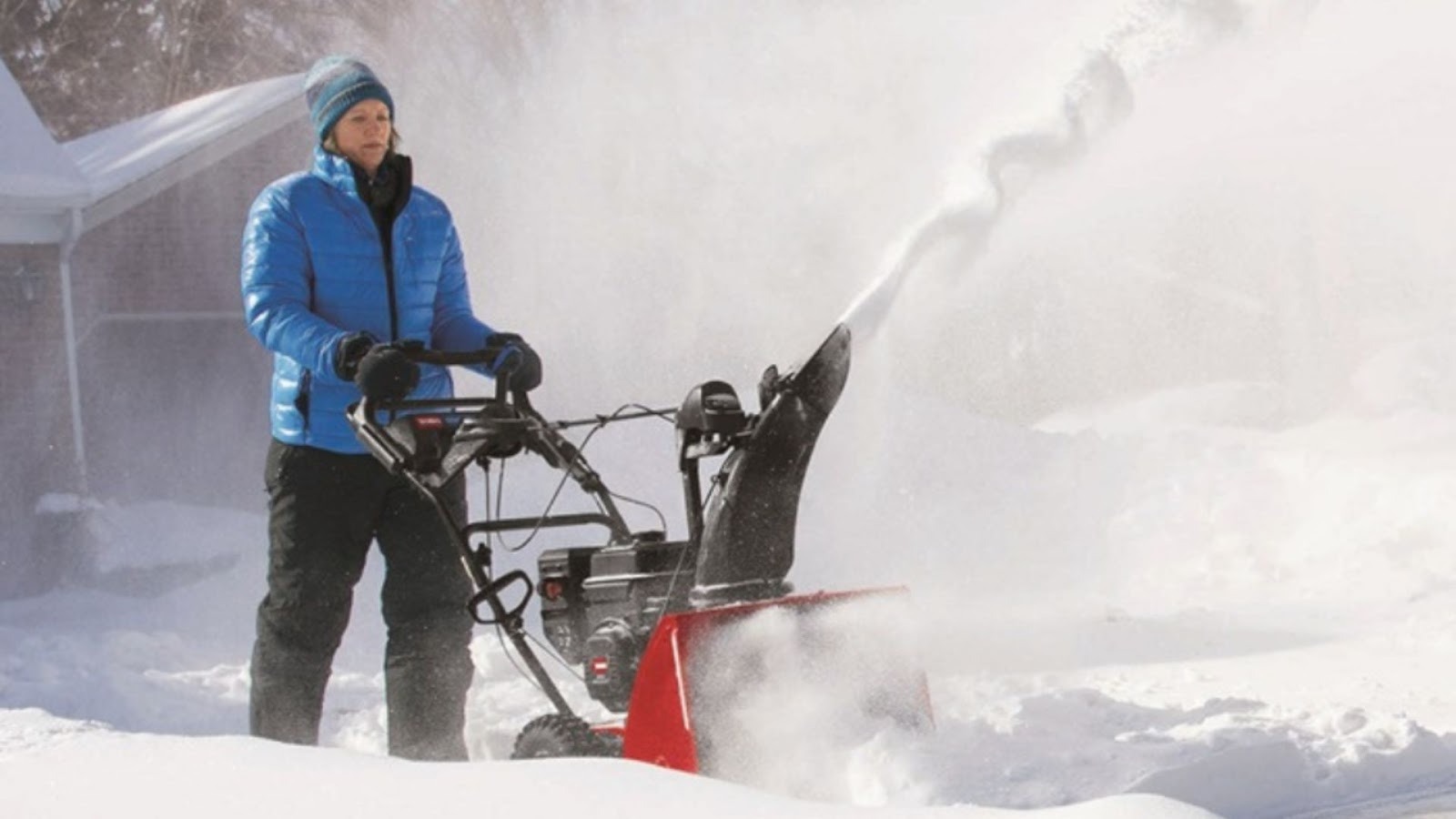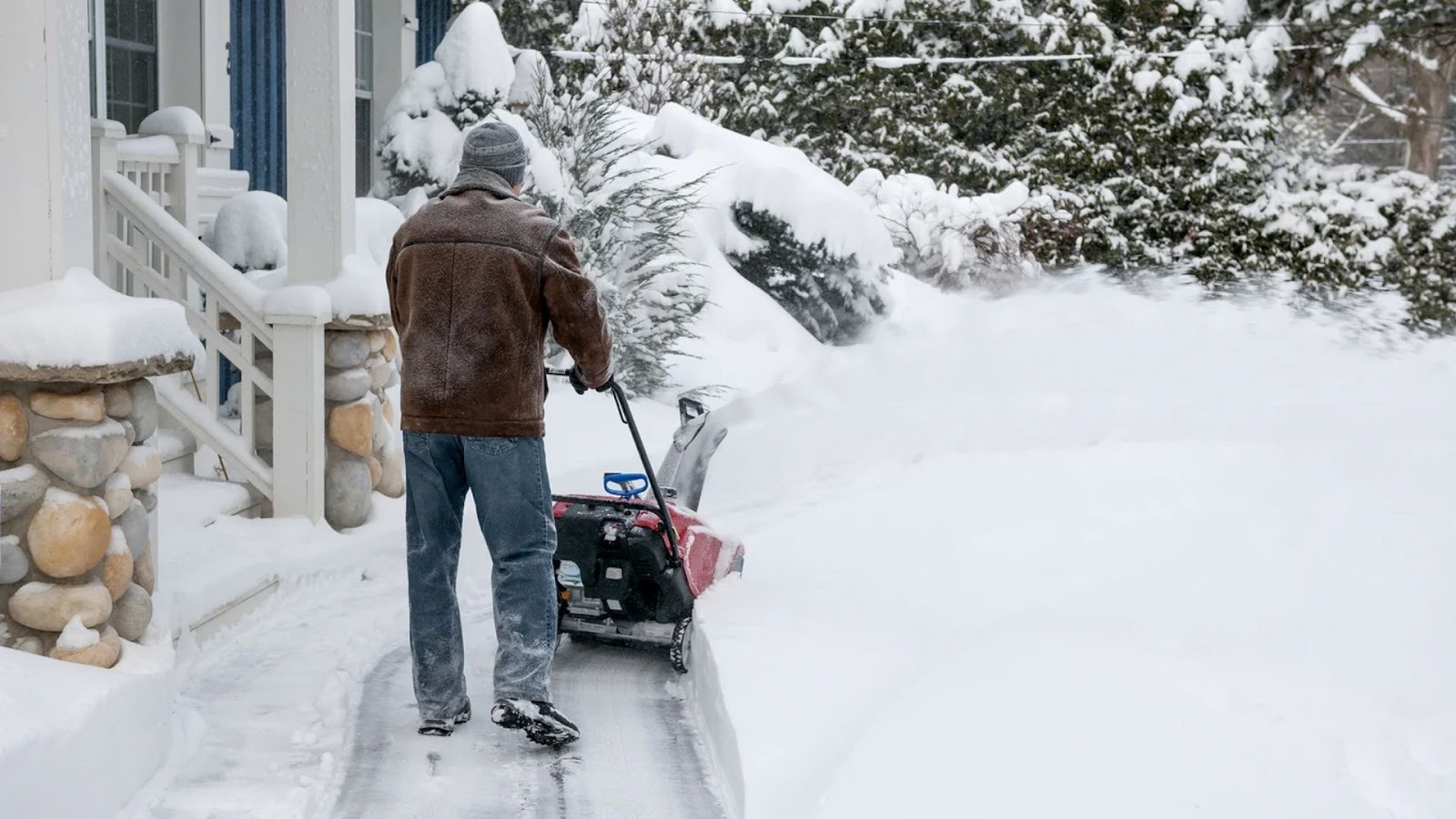When winter arrives, most homeowners focus on clearing their driveways and walkways to ensure safety. What often gets missed is how those same snow removal habits affect your lawn and landscape. A few thoughtless moves can cause lasting damage by spring.
If you aren’t careful during snow removal, you can compact soil, tear up turf, or snap branches under the weight. Salt runoff from de-icing can burn grass and roots, leaving behind stubborn bare patches once the snow melts.
These problems might be frustrating as a homeowner, but they’re also avoidable.
This guide will walk you through practical, homeowner-friendly techniques for removing snow while protecting your turf, plants, and hardscape throughout the winter.
1. Use proper tools and techniques to remove snow without damaging turf, plants, or hardscape.
2. Strategically place snow and choose safer de-icers to prevent soil compaction, salt burn, and fungal issues.
3. Tackle post-winter recovery early with debris removal, aeration, overseeding, and balanced fertilization.
4. Consider professional snow removal for large properties or heavy snowfall to protect lawns and save time.
5. Smart snow management keeps landscapes healthy, reduces spring repairs, and ensures safer, cleaner walkways all winter.

Most winter lawn problems start with how snow is removed, not from the snow itself. Homeowners often unintentionally damage their yards through rushed shoveling, improper snow placement, or the use of incorrect tools.
Below are easy-to-follow techniques designed to help you remove snow efficiently without harming your landscape.
The right set of tools sets the tone for everything that follows. Using tools that are gentle on your lawn prevents accidental damage before it happens.
Good options to consider:
Minor upgrades like these often prevent the most common winter lawn issues.
When your yard is buried in white, it’s easy to lose track of where grass ends and hardscape begins. A little preparation now prevents big problems later.
Quick setup tips:
This simple step prevents accidental plowing into lawns, garden beds, or edging stones when visibility is low.
Even the best tools can’t compensate for poor technique. How and when you move snow matters just as much.
Here are some practical tips to consider:
These simple changes help keep both your lawn and your energy levels intact through the season.
Your landscape’s living elements are just as vulnerable as your turf. Heavy snow and ice can weigh down branches, snap limbs, and cause lasting damage.
Practical protection steps:
By caring for trees and shrubs during removal, you prevent structural damage that often shows up only once spring arrives.
Once you clear the snow, half the job is done. You can now focus on smart piling and mindful de-icing to protect your yard long after the storm has passed.
Snow removal isn’t just about clearing what falls. Where that snow ends up and what you use to melt ice can have lasting effects on your lawn. A few smart adjustments can protect roots, prevent fungal problems, and save you from muddy, patchy grass when spring arrives.
Think of snow piles as temporary landscaping features. Where you put them determines how your lawn will look once the thaw begins.
A snow pile strategy may seem small, but it plays a significant role in how quickly your lawn recovers in the spring.
The products that keep your walkways safe can quietly harm your landscape. Salt runoff is one of the biggest culprits behind dead patches and weak spring growth.
A few minor adjustments can make a significant difference.
An effective snow and salt plan keeps your lawn healthy and prevents damage long after winter ends.
For those who prefer a hands-off approach, hiring professionals offers convenience and reliable protection during the harshest months.

Hiring a professional snow removal service can be a wise choice for homeowners who want to protect their lawn and landscape through winter. While DIY methods work for lighter jobs, expert help saves time, effort, and avoids costly damage in more challenging conditions.
Professional crews use specialized equipment designed to clear snow efficiently while protecting turf, hardscape, and plants.
This makes them especially helpful for large properties or areas with frequent heavy snowfall.
Why it can be worth it:
Also Read: Tips to Avoid Snow Compaction on Grass in Western NY
Snow removal is about more than keeping paths clear. When done correctly and on time, it protects lawns, keeps plants healthy, and makes walkways safer through the season.
Acting too late or using ineffective methods can leave lasting damage that persists well into spring.
The goal is balance. Clear essential areas for safety, but manage piles carefully, limit salt use, and monitor problem spots such as heavy drifts or salted edges.
For homeowners who want extra peace of mind, Percy’s Lawn Care offers safe, reliable snow removal that protects your property while keeping it accessible.
Contact us today to schedule your service and enjoy a healthier, worry-free yard all winter long.
1. Do I really need to clear snow from my lawn, or can I wait until spring?
Leaving snow can compact soil, block sunlight, and encourage fungal growth. Clearing early helps the lawn recover faster.
2. Is rock salt safe for lawns?
Not really. Rock salt (sodium chloride) can burn grass and damage roots. Use lawn-safe alternatives, such as calcium or magnesium chloride.
3. How deep can I let the snow pile before it hurts my turf?
Thick snow piles (over a foot or more) remain cold and heavy, causing compaction and suffocation of grass underneath.
4. When is the best time for lawn aeration after winter?
As soon as the ground is workable (no frost), aerate to relieve compaction before spring growth begins.
5. How do professionals remove snow without damaging landscapes?
They use equipment with rubber blades, calibrated de-icers, and guided planning to protect turf, plants, and hardscape.
6. What if my lawn shows signs of salt burn or dead patches?
Rinse affected areas with water, spot-seed, and monitor moisture levels. Early intervention prevents further spread.